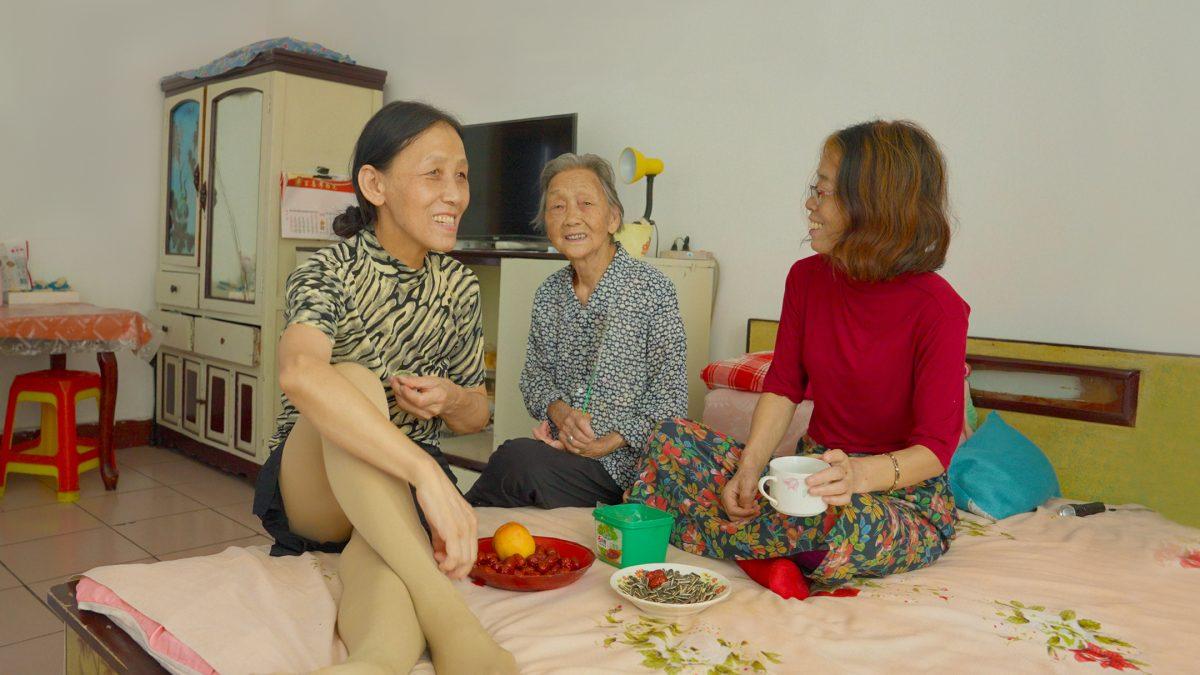
Together, director Yehui Zhao and the audience celebrate the survival of a memory between a family and the land they were raised on
Nestled deep in the low valleys of the Loess Plateau region in north-central China is what remains of the Xi Jiao Gou village, a rural farming community that has been abandoned for more than four decades. It was born of the Land Reform Movement that revolutionized the country following World War Ⅱ.
Families like filmmaker Yehui Zhao’s came to live in villages such as Xi Jiao Gou after the Second-Sino Japanese War, which lasted from 1931-1945, where the Japanese military occupied China. This time of economic hardship and widespread destruction broke apart and displaced many Chinese families. As a result, the people of this mountain village led difficult lives. They were kept awake at night from the howling of wolves outside their cave dwellings, which the elders hand-dug into the sides of cliff faces.
They did not have access to medicine, and some family members’ lives were lost to common colds and minor skin infections. The demand for labor in these communities was high, and many of the children raised on the mountain did not receive an education as they needed to work to support their families.
Underneath the palpable struggle and persistent trauma of this village is a transcendent connection to and honor of the earth.
Zhao said she did not always know this story of her family’s heritage. In “May the Soil Be Everywhere,” Zhao and the audience embark on an organic journey to uncover the identity of her great-grandfather, Zhang Qi Ping, to reclaim their ancestral land and ultimately celebrate the joy of a collective memory.
“May the Soil Be Everywhere” uses the memory and life experiences of the filmmaker’s grandmother — who takes ownership of the film as the protagonist — to forge a path through time and space. This leads Zhou on a trek back to Xi Jiao Gou, where she encounters many people who question her motives in returning to the abandoned village to uncover her family’s overgrown past.
As her grandma’s memory strengthens over the course of the film, the viewer gets the sense that “May the Soil Be Everywhere” will continue to act as a reservoir of active recollection for Zhou’s family. The movie gracefully cuts between interviews of extended family members and anecdotes about life on the mountain. Zhou uses delicate examples of the grit and dedication present in their seemingly mundane lifestyles to cement a spirit of joy in the film.
One eye-catching motif in the film was several stop-motion style animations. One illustrated a thread inching its way across the screen as if being strung through the eye of a needle. Another showed a delicate plant that evolves from seed to sprout. These animations spring onto the screen when a member of Zhao’s family, or herself, reach a moment of enlightenment about their family’s heritage or demonstrate a moment of personal growth.
The role of animation in this documentary added to its celebratory, organic narrative. The structure of stop motion itself is organic — which reinforced the cyclical nature of life Zhou aimed to communicate in this film.
Zhou resolves the tension in this film by bringing her grandmother, mother and members of her extended family back to their home in Xi Jiao Gou. This is illustrated by a series of heartwarming, contemplative family portraits set against different backdrops on the mountain. The deep relationship between this family and the physical environment in which they grew up is inspiring.
Although absent in body from the family portraits, Zhou’s great-grandfather is present in other ways. The land he devoted his life to cultivating, the craftsmanship of their mountain home and the roots that plant the family heritage in Xi Jiao Gou all carry his energy through the pictures.
To end the film, Zhou makes a bold narrative choice. She decides to place her family in prompted scenes, located on the mountain, evocative of a game of charades. The viewer gets a glimpse into a theatrical and playful side of her family’s personalities.
The audience sees the family mime picking fruits from the once-abundant apricot trees, go through the motions of tilling the land and stand as if they had been planted amongst the dense, grassy brush. The reenactments did not feel over-staged or over-produced, but seemed cathartic for the family. The audience was reminded of the connection between the human body, cultivation of the earth and a bountiful harvest shared between loved ones.
“May the Soil Be Everywhere” paints a heartfelt picture of family reconciliation, and shows the land a house exists on is part of what makes that place home. Zhou effectively reframes her intergenerational trauma as a shared avenue in which to heal.
You can keep up with The Maneater’s 2025 True/False Film Fest coverage here.
Edited by Molly Levine | [email protected]
Copy edited by Hannah Taylor | [email protected]
Edited by Emilia Hansen | [email protected]
Edited by Emily Skidmore | [email protected]